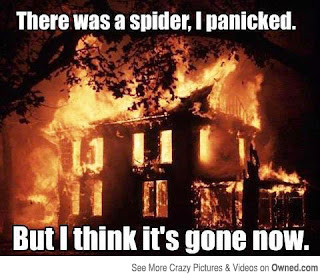This
week we’re back to vampires, courtesy of Steve Niles and Ben Templesmith in the
graphic novel 30 Days of Night.
I
remember when the movie came out back in 2007, and all the girls were excited
about seeing Josh Hartnett. My friends who saw it because they didn’t care
about Hartnett and wanted to see the movie for its own merit all said the same
thing: it wasn’t good.
I
knew it was based on a graphic novel, but I’ve never been a big reader of
comics and forgot about it until finding out I had to read it for class. I
wasn’t sure what to think because of what I’d heard of the movie, but no matter
whether the novel was better than the movie, I knew the vampires wouldn’t
sparkle. They’d be monsters instead of brooding heartthrobs.
A
huge factor in the monster endeavor was the setting. The story takes place in
Barrow, Alaska, where temperatures are on average below zero and the area is
plunged into a thirty day stretch when the sun doesn’t rise. The setting
immediately made me uncomfortable. I hate being cold. I only have so many
blankets and my heater only works so well. I hate snow. The first snow of the
season is pretty, but afterwards it’s annoying with its need to be cleared. I
hate winters in the Northeast. They’re cold, gray, and dark. The sun sets
around 4 p.m., and I always wish I could hibernate until spring. So reading
about these freezing, dark days in Barrow, Alaska made me cringe.
Because
of these thirty days of darkness, vampires can roam freely and feed. They
massacre Barrow, and they don’t look good doing it. Now while a part of me
misses a monstrous vampire, I admit to enjoying a well-written sexy vampire (that
doesn’t sparkle). But I’m not reading a book with those kinds of vampires to be
scared or even made a little uneasy.
Niles
vamps are creepy, with rows of pointed teeth, long claws, and black eyes. Even
their text bubbles are ragged and aesthetically unpleasing, just like the
monsters saying the words are. They’re out to satiate their bloodlust, and the
splashes of red from their kills mark many of the pages. Unlike the vamps in I Am Legend, Niles vampires are active.
Rather than lurk quietly in the background while the hero works out a solution
to end them like the I Am Legend vampires,
the 30 Days of Night vampires are
just around the corner waiting to feed. And it’s pitch black out. And it’s
below zero. Oh, and all forms of communication to the outside world have been
cut off. Also, no weapon can kill them—only vampires can kill vampires.
Once
the hero of the story, Eben, figures this out, he freely chooses to become a
vampire so he can kill the big bad head vampire who has come to Barrow to cover
up the killing spree so the media doesn’t get wind that vampires exist. Eben
driving force isn’t just to protect the town, but to protect his wife’s Stella.
Again, the theme of the power of women creeps into the readings. Eben acts out
of love and protectiveness when he elects to turn vampire, and just like in I Am Legend, Breeding Ground, and “Rawhead
Rex,” the influence of women is key to keeping the story moving.
Stella
points out after the fact that the sun was about to rise in a day or so. I
couldn’t help but wonder if the remaining townspeople couldn’t ride out the
killing spree another day, then they’d have about nine months to focus on an
alternative plan to kill vampires should the monsters come back.
Wonderings
aside, Eben’s killing of the alpha I found hard to believe. I’ve read books
were young vampires are stronger than the old ones, but I never fully bought
it. It makes more sense to me that the older vampires would have the upper hand
because they’d had more time to hone their skills. Maybe I’m supposed to extend
my disbelief that Eben is able to kill the alpha because he’s a sheriff.
Up
until that point, I was completely with Niles and his vampires. I found them warped
and fascinating, and I wanted to read more up until the end when Eben punched
the head vampire through the face. But I can almost overlook this because these
vampires worked so well in the classic bloodthirsty way. If nothing else, I
have one more reason to stay inside this winter.


.jpg)











